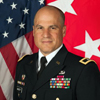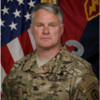
Insight By Nutanix
DoD’s drive toward better tactical capabilities begins with simplicity, capacity
Today and tomorrow, cloud services can help transform the warfighter’s ability to meet their mission in a safe and secure manner.
Part 2 of the interview:
Recently, the Defense Department participated in the Enhanced Logistics Base or ELB demonstration Norway. The goal of this exercise called Trident Juncture 2018 is to test, refine and further develop existing or new capabilities while coordinating and integrating with NATO and other partners.
The exercise demonstrated future capabilities of autonomous and automatized systems within military logistics. The integrated Enhanced Logistic Base will cover all aspects of future logistics in a military-civilian demonstration to include a fully integrated autonomous and automatic logistics stream.
Sounds like a fascinating effort that can show the potential of technologies like remote machine guns, cubed storage and a field made 3D printer.
But none of these great technologies will work to their full capacity without data and connectivity.
It’s imperative for DoD to ensure warfighters can access data from anywhere, at any time.
One way that’s starting to happen is the increased use of cloud computing services, which many see as critical to maintaining the nation’s military advantage.
Today and tomorrow, cloud services can help transform the warfighter’s ability to meet their mission in a safe and secure manner.
Add to that emerging capabilities like artificial intelligence and machine learning, the potential to make warfighters better and faster is huge.
Maj. Gen. David Bassett, the Army’s program executive officer for command, control and communications–tactical (PEO-C3T), said is following a halt, fix and pivot strategy.
“We will halt efforts which we know will not get us to our end state. We will make changes, fix some programmatic efforts in some new capabilities that we know we can bring to the field quickly. We will pivot to a new process for experimenting and delivering technology as well as a new set of capabilities that will get us to the network that we know we need in the future,” Bassett said on the IT Innovation Insider show. “It will not happen overnight, but we’ve been on that path and have begun experimentation.”
The Army is doing this across four lines of effort:
- Unified transport, which is about putting the communication infrastructure in place to get data from point A to point B, both in the tactical space and back to enterprise systems.
- Mission command systems and moving to a common operating environment where the Army doesn’t have systems that are stovepipes, but can leverage software to give soldiers a common operating picture that works across the battlefield applications and reduces the amount of servers and infrastructure needed in the field.
- Interoperability across services and with allied partners.
- Making command posts more deployable, more survivable and more capable.
“Across all four of those lines of effort we have efforts underway both programmatic and experimentation,” Bassett said. “We want to learn from immediate soldier feedback so we can move toward a model where don’t necessarily start with a set of requirements that were written in a school house somewhere, but rather get equipment quickly in the hands of soldiers, be able to leverage what technology can deliver and make much quicker decisions about what we can field across the force.”
Part 1 of the interview:
Retired Lt. Gen. Stephen Boutelle, the former Army CIO and now a visiting fellow at MITRE, said the tactical edge means so many different things to each of the services there isn’t a generic approach will not work for all the services.
“It’s really important to define the environment,” he said. “As we look at it, we have to look at the lowest level of the tactical edge all the way up to the enterprise.”
Scot Susi, the director of DoD for Nutanix, said the military, and for that matter than organization that works in an austere environment, must get away from cobbling systems together that are difficult to maintain and are complex to use.
“We need to give the folks in the field a simple interface, things that they are used to interfacing with like the iPhone or iPad that make it as simple as possible and reduce the number of moving parts,” he said. “That way there are fewer things to break, and when they do break, they are easier to fix in the field without having to send a highly trained, highly paid service engineer to complete rebuild an entire application stack.”
Bassett added the Army would layer on functionality after functionality, which added to that complexity. Now, the Army’s changing its current process to make simplicity and usability to the forefront.
“Some of that can be helped along the way by systems that employ artificial intelligence to help abstract away some of that complexity and help commanders turn all that battlefield data into actionable intelligence,” he said. “Some of it is about managing those functions and making sure the things we deliver work together well. We are figuring out how we can leverage commercial capability but not utterly rely on it so we can operate in that congested and contested environment. It’s absolutely at the heart of where we are trying to go with this network modernization.”
Copyright © 2025 Federal News Network. All rights reserved. This website is not intended for users located within the European Economic Area.
Related Stories

Trump’s VA pick defends hiring freeze amid staffing concerns
Featured speakers
-

Maj. Gen. David Bassett
Program Executive Officer; Command, Control and Communications – Tactical, U.S. Army
-

Col. Rob Ryan
Deputy Director, Network Cross-Functional Team, U.S. Army
-

Dr. Angela Dalton
Communications and Networking Group Supervisor, The Johns Hopkins University Applied Physics Laboratory
-

Lt. Gen. Steven Boutelle (Ret.)
Senior Visiting Fellow, MITRE
-

Scot Susi
Director of DoD, Nutanix
-

Jason Miller
Executive Editor, Federal News Network
Upcoming Events
Related Stories
Top Stories

Maj. Gen. David Bassett
Program Executive Officer; Command, Control and Communications – Tactical, U.S. Army
MG Bassett comes to PEO C3T after serving as Program Executive Officer for Ground Combat Systems since September 2013. He was responsible for the life-cycle management of a complex and diverse organization with six Acquisition Category I programs (Armored Multi-Purpose Vehicle program, M109A7 Self-Propelled Howitzer program, Abrams Tank upgrades, Bradley Fighting Vehicles upgrades, the Stryker Family of Vehicles and the M88 HERCULES). In addition to the combat vehicle modernization efforts for each of the ACAT I programs, to include active protection systems, he is also responsible for multiple Foreign Military Sales efforts and pending programs such as Mobile Protect Firepower. The ground combat systems portfolio has an annual budget of over $2.67 billion with a total program budget of over $14.8 billion (POM FY16-20).
MG Bassett was commissioned through ROTC in 1988 into the Signal Corps with a Bachelor of Science in Electrical Engineering from the University of Virginia. As a junior officer, he served in Germany in tactical positions as Communications Platoon Leader, 2nd Armored Cavalry Regiment and as Battalion S4 and Company Commander in 123rd Signal Battalion, 3rd Infantry Division.
Following the Signal Officer's Advanced Course and Advanced Civil Schooling at the University of Virginia where he received a Master of Science in Computer Science, he was assigned to the US European Command Staff, where he served as the Requirements Analysis and Interoperability Action Officer, J6.
He transferred to the Army Acquisition Corps in 1999 and was assigned to Fort Monmouth, New Jersey, as Operations Officer, Communications and Electronics Command Software Engineering Center. MG Bassett went on to serve at Fort Monmouth as the Chief Software Engineer for the Future Combat Systems Network and as Program Integrator and Product Manager, Future Combat Systems, Software Integration. He then served on the Joint Staff as the Ground Maneuver Analyst, Capabilities and Acquisition Division, J8.
From July 2009 to May 2012, MG Bassett served as the Army's Project Manager for Tactical Vehicles within the Program Executive Office for Combat Support & Combat Service Support (PEO CS&CSS). In June 2012, Tactical Vehicles was restructured, and he was tapped to lead the Joint Program Office, Joint Light Tactical Vehicles, PEO CS&CSS, through the Engineering and Manufacturing Development award, from June 2012 to August 2012.
In September 2012, MG Bassett assumed responsibilities as the Deputy Program Executive Officer for CS&CSS. As the DPEO he provided technical and managerial oversight for approximately 270 tactical wheeled vehicles, special purpose vehicles and equipment, physical security equipment, petroleum and water systems, and other support systems/equipment for the US Army and sister services.
MG Bassett is a graduate of the Army Command and General Staff College at Fort Leavenworth, Kansas and a distinguished graduate of the Industrial College of the Armed Forces in Washington, D.C.

Col. Rob Ryan
Deputy Director, Network Cross-Functional Team, U.S. Army
COL Robert M. Ryan currently serves as the Deputy Director of the Network Cross-Functional Team (CFT). The Network CFT is responsible for the focused integration of network, command, control, communications and intelligence to enable mission command across the network. As the deputy director, he is a key enabler within the team to drive the execution of the cross-functional team’s mission. Bringing expertise from a maneuver formation, Ryan provides critical feedback from the field and warfighter to inform CFT experimentation efforts and drive requirements.
Prior to his current assignment Col Ryan's was Commander of the 3rd Brigade Combat Team 25th Infantry Division. In 2010 to 2012, COL Ryan commanded the 4th Bn., 31st Inf. Regt. at Fort Drum, N.Y. He was then assigned with the 2nd Brigade Command Team, 10th Mountain Division as the brigade’s deputy commander in Patika Province, Afghanistan. In 2013, COL Ryan returned to Fort Benning and assumed duties as the battalion commander for the Regimental Special Troops Bn., 75th Ranger Regt. During his tenure at the Regimental Special Troops Bn., he also served as the Joint Task Force Commander, in Kabul, Afghanistan. COL Ryan recently graduated from the Naval War College and earned a Master of Arts Degree in National Security and Strategic Studies.
From 2009-2010, COL Ryan completed his tour with U.S. Army Special Operations Command (USASOC) as the aide-de-camp for the commanding general, USASOC. In 2006, COL Ryan returned back to 3rd Bn., 75th Ranger Regt. to serve as a Special Operations Task Force (SOTF) commander and Joint Task Force Operations Officer, Ranger battalion operations officer, and Regimental Special Troops battalion executive officer. In 2005, COL Ryan attended the U.S. Air Force Command and Staff College at Maxwell Air Force Base, Alabama, where he received a Masters of Military Arts and Science.
He was selected for a third company command as the 75th Ranger Reconnaissance Detachment commander. In this capacity COL Ryan deployed to Pakistan, Afghanistan, and Iraq for over 18 months during his two years of command. As a staff officer and company commander, COL Ryan deployed during the initial combat operations in both Afghanistan and Iraq. Prior to his deployment he was assigned to Fort Riley, COL Ryan returned to the 75th Ranger Regt. and served as the 3rd Ranger Bn.’s assistant operations officer prior to assuming command of A Co., 3rd Ranger Bn. In 1998 COL Ryan assumed command of C Co., 1st Bn., 16th Inf. Regt. (Mechanized) and deployed to Bosnia and Kosovo from 1999-2000.
COL Ryan enlisted in the Army in 1984 and was stationed at Hunter Army Airfield, Georgia, with the 1st Ranger Bn., 75th Ranger Regiment. COL Ryan served from 1984-1989 as a rifleman, PLT RTO, team leader and squad leader. In 1993, COL Robert Ryan was commissioned into the Infantry as a Distinguished Military Graduate from the ROTC program at Cornell University. After attending the Infantry Officer Basic Course, COL Ryan was assigned to the 6th Brigade (Light) at Fort Wainwright, Alaska. There he was assigned to the 4th Bn., 9th Infantry Regiment and served as a rifle platoon leader, scout platoon leader, and company executive officer. In 1995, COL Ryan returned to Fort Benning, Georgia, and assumed duties as a Ranger rifle platoon leader and executive officer with the 3rd Ranger Bn., 75th Ranger Regt. COL Ryan attended the Infantry Officer Advanced Course in 1998 and was assigned to the 1st Infantry Division (Mechanized) at Fort Riley, Kansas, where he served as the assistant operations officer for 1st Bn., 16th Inf. Regt. (Mechanized).
COL Ryan’s awards and decorations include the Legion of Merit, Bronze Star Medal (2 “V” devices, 1 silver and 2 bronze oak leaf clusters), Meritorious Service Medal (1 silver oak leaf cluster), Army Commendation Medal (1 “V” device, 1 silver oak leaf cluster), Joint Service Achievement Medal, Army Achievement Medal (1 silver oak leaf cluster), Armed Forces Expeditionary Medal (with arrowhead device), Joint Meritorious Unit Award, Valorous Unit Award, Afghan Campaign Medal (3 service stars), Master Parachutist Badge (with bronze combat service star), Military Freefall Master Parachutist Badge, and Ranger Tab.
COL Ryan is married to the former Christine Clarke of Syracuse, N.Y., and they have two children, Colin, currently serving in the US Navy, and Haley who is entering her senior year at West Georgia University.

Dr. Angela Dalton
Communications and Networking Group Supervisor, The Johns Hopkins University Applied Physics Laboratory
Dr. Angela Dalton is a member of the Principal Professional Staff at the Johns Hopkins University Applied Physics Laboratory (JHU/APL) where she is the supervisor for the Communication and Networking Systems Group. Dr. Dalton leads a team of over 50 scientists and engineers to architect and engineer end-to-end military communication systems that are adaptable to mission needs and resilient to electromagnetic warfare, limited spectrum, and cyber-attacks. She has served as a senior technical lead and manager for large Department of Defense projects to take a requirements-based, mission-driven, approach to future communication capabilities. Dr. Dalton has also been the Principal Investigator for a JHU/APL internal research and development project developing a moving target defense that provides system agility through software defined networking, software defined radios, and cross-layer interactions. Her research interests include software defined networking, delay/disruption tolerant networking, and context-aware and adaptive networking. She has extensive experience in research, development and analysis of networking technologies and software engineering experience including firmware development, middleware design, implementation, and analysis. Dr. Dalton earned her M.S. and Ph.D. in Computer Science from Duke University and her B.S. in Computer Engineering from Virginia Tech.

Lt. Gen. Steven Boutelle (Ret.)
Senior Visiting Fellow, MITRE
Lt. Gen. Steven W. Boutelle (Ret.) is a world-renowned expert in converged voice, data, and imagery over Internet Protocol (IP), particularly in helping large institutions adopt enhanced network infrastructure. As the former Chief Information Officer for the Army, he is prominent in military circles for his pursuit of technology that enhanced productivity and provided technological advantage to the warfighter. He is the former CEO of the Internet Routing in Space (IRIS) initiative and vice president for business development for the Global Government Solutions Group, both components of Cisco Systems.
In these roles, Boutelle advised government customers on business practices and technical solutions that address their mission goals. He remains a proponent of moving data using IP and was sought by Cisco after his distinguished military career because of his visionary leadership and critical experience in the technology fields.
A native of Pasco, Washington, Boutelle grew up in Portland, Oregon. He studied at Oregon State University before enlisting in the Army, attending officer’s candidate school. He was commissioned before moving to the Signal Corps. During his military career, he served in senior Army leadership positions, including Director of Information, Operations, Networks, and Space and Program Executive Officer of Command, Control, and Communications Systems. In 2005, he was named “U.S. Department of Defense Executive of the Year” by Government Computer News; the following year he was named a “Top 100 CIO” by Federal Computer Week.
Boutelle serves on the Defense Science Board Task Force for Interoperability and sits on the boards of PacStar Communications and ThreatMetrix. He is a sought-after speaker and has delivered keynote addresses at the World Economic Forums in Geneva and Jordan (2014 and 2015) as well as at the Berlin Security Conference in 2016.
He holds a bachelor’s degree from the University of Puget Sound, an MBA from Marymount University, and a Doctor of Law, Honoris causa, from the University of Puget Sound.

Scot Susi
Director of DoD, Nutanix
Scot is the Regional Director for U.S. Department of Defense at Nutanix. He has spent over 30 years supporting the Federal Government and began his career as an electrical engineer in the Central Intelligence Agency. In his current role, he leads an interdisciplinary team of direct and inside sales, solutions engineering, channels, and marketing to serve and support our military customers. Scot’s particular areas of expertise include cloud computing, virtualization, storage, and data center innovations. Prior to joining Nutanix, Scot held leadership positions at VMware, NetApp, and BMC Software. He earned his Bachelor of Science degree in Electrical Engineering from Virginia Polytechnic University. Scot and his family are avid skiers and live in the Washington, DC area.

Jason Miller
Executive Editor, Federal News Network
Jason Miller is an executive editor and reporter with Federal News Radio. As executive editor, Jason helps direct the news coverage of the station and works with reporters to ensure a broad range of coverage of federal technology, procurement, finance and human resource news.As a reporter, Jason focuses mainly on technology and procurement issues, including cybersecurity, e-government and acquisition policies and programs.




